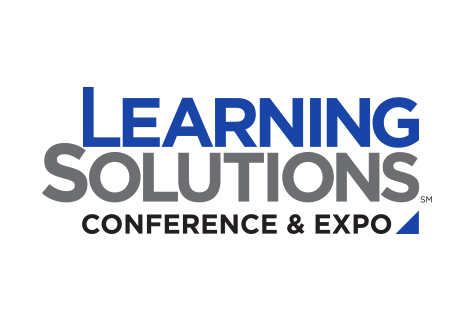About The
Learning Guild
The Learning Guild is a community of practice for those supporting the design, development, strategy, and management of organizational learning. As a member-driven organization, the Guild produces a countless number of resources all devoted to the idea that the people who know the most about making learning successful are the people who produce learning every day in corporate, government, and academic settings. Our goal is to create a place where learning professionals can share their knowledge, expertise, and ideas to build a better industry—and better learning experiences—for everyone.
Tap into the vast well of expertise by becoming an Learning Guild Member for free.
Conferences
The Guild produces several conferences, including DevLearn, Learning Solutions, and Learning. Learn more.
Learning Solutions
eLearning industry’s oldest and most trusted source for information on eLearning. Learn more.
Online Conferences
![]() Online conferences take an in-depth look at contentious topics in our industry. Learn more.
Online conferences take an in-depth look at contentious topics in our industry. Learn more.
Guild Research
![]() Guild Research produces reports and resources to help you understand the depth of our field. Learn more.
Guild Research produces reports and resources to help you understand the depth of our field. Learn more.
Webinars
![]() Connect directly with learning experts and discover ideas, tips, and techniques to help you improve your skills. Learn more.
Connect directly with learning experts and discover ideas, tips, and techniques to help you improve your skills. Learn more.
Newsletters
![]() Insider and Update newsletters are quick-reads designed to keep you updated on Guild news and important industry topics.
Insider and Update newsletters are quick-reads designed to keep you updated on Guild news and important industry topics.
Guild For Good
![]() This program celebrates those in our community who go above and beyond to create a better tomorrow for all. Learn more.
This program celebrates those in our community who go above and beyond to create a better tomorrow for all. Learn more.
Job Board
![]() Post your resume, find a great new job, or a great new employee using The Learning Guild Job Board. Take a look at the Job Board.
Post your resume, find a great new job, or a great new employee using The Learning Guild Job Board. Take a look at the Job Board.
Other Benefits
![]() Annual Salary & Compensation Report, conference handouts, networking opportunities, and more.
Annual Salary & Compensation Report, conference handouts, networking opportunities, and more.
Filter By:
Sessions in Block 9
LS901 Retail Edge: How Samsung Australia Empowered Staff and Transformed Learning
Concurrent Session
How did Samsung Australia prepare for a shift from live, in-person training and product launch services to sales teams at 24-plus wireless carriers and big box retailers across Australia and New Zealand? What is required to train more than 20,000 external retail staff on an end-to-end platform—spanning registration, content delivery, and tracking—and provide support for each carrier through a privately branded experience?
Read MoreWith the dazzle of technology and tools, it’s easy to get distracted from the basic question: “What will the learner be able to do after the experience that they can’t do now?” Return to the days of accelerated learning and rediscover the nuggets needed to design learning that drives retention and fun by honoring the unique needs of each participant.
Read MoreLS903 The Missing Link: Data Interoperability from Learning Systems to Operations
Concurrent Session
SCORM, the xAPI, cmi5, and a host of other learning data standards exist and have widespread acceptance in the learning community. How can these standards extend beyond the learning world into the realm of enterprise technology? What the industry needs now is a distinct and real conversation on how to align learning technology with the technology used by the rest of the enterprise.
Read MoreA badge is a symbol or indicator of an accomplishment, skill, competency, or interest. Badges provide evidence of learning that happens in and beyond formal learning settings. Unlike transcripts or resumes, badges give prospective employers, schools, collaborators, and other learners a more complete picture of knowledge, skills, and abilities of the badgeholder. As with degrees, certificates, and credentials, a comprehensive ecosystem surrounds and supports badges.
Read MoreAnimation is a powerful tool for creating engaging eLearning experiences. Sadly, most animations are used without purpose as a design embellishment. When this happens, the use of animation distracts the learner from the content, rather than helping to elevate the content.
Read MoreThe classic eLearning lesson forces participants to read slide after slide of textual content and take an evaluation when completed. Employees retain just enough to pass the test, so they can check off yet another mandatory course. As a rule, employees dread this kind of learning but consider it a necessary evil.
Read MoreWhether it is educating the public about a hobby, product, or public service, informal learning is becoming an increasingly important channel. The options for distributing video-based informal learning content have grown. YouTube, Apple TV, Amazon Fire TV, Roku, and other devices all provide important pathways to reach consumers and learners. Despite the number of channels now available, not all channels are appropriate to reach all audiences.
Read MoreLS909 Do You Have What It Takes? Exploring the CompTIA Virtual Trainer Certification Competencies
Concurrent Session
Virtual classroom technologies are not new. In fact, you may already be hosting web-based meetings and training sessions. But are your preparation, delivery, engagement, and evaluation skills good enough to pass CompTIA’s trainer certification tests (CTT+)? Great virtual instructor-led training requires much more than logging in, turning on your microphone, and reading bulleted slides or demonstrating software features. You need to shift your approach to make the very best use of the resources available in WebEx, Adobe Connect, or GoTo webinar and engage learners in meaningful ways.
Read MoreA number of myths persist about the alleged, ever-shortening attention spans of people, but what does the science say? Neuroscience, behavioral economics, and consumer psychology all offer insights into how attention is managed and allocated. Additionally, the ability to manage attention and focus seems to be related to the abilities that allocate willpower and influence how decisions are made.
Read MoreLS911 B.Y.O.L.: Twenty Best Captivate Tips and Tricks for Fast Workflow
Concurrent Session
Most eLearning developers want to be efficient and productive, and want to please their customers. Clients or supervisors, however, often do not understand why it takes so long to develop eLearning. Captivate developers require an extensive set of tools and techniques in their arsenal in order to utilize the intricacies of the full environment effectively.
Read MoreLearners prefer modern learning solutions and companies want increased organizational effectiveness. Learning leaders want to provide the best learning solutions possible, but often face the problem of lacking executive support, funding, IT support, etc. Getting executives to invest money requires changing the status quo, having tough conversations, and making trade-offs.
Read MoreWith the advent of the xAPI, a new learning technology product has come into being: the learning record store (LRS). It is a requirement for using the xAPI to track learner behavior, serving as a repository for data generated by the xAPI statements. Stakeholders need to know the basics of how LRSs work and the range of features available in them in order to make intelligent acquisition, ecosystem design, and implementation decisions. In order to use the xAPI, you must have an LRS.
Read MoreECO914 Learning: The Foundation of a Strong Workplace Culture
Concurrent Session
Every workplace has a culture. However, the real culture within an organization often doesn’t resemble the mission statement and core values posted in the hallways and on the company’s website. And, if eLearning or knowledge is included in the company’s values, this tends to refer to limited, formal training events, or tuition reimbursement. Learning professionals must understand the foundational impact their efforts can have on the organization and its culture—everything from the way work is done to how employees relate to customers.
Read MoreECO915 A Learning and Performance Ecosystem Project Showcase: Problem, Process, Solution
Concurrent Session
A multinational industrial manufacturing company recognized that it had excessively high inventory costs. The executive vice president of quality systems engaged a L&D organization to see whether they could help. L&D conducted a thorough needs analysis, harvested knowledge from experts, and developed a solution using five ecosystem components: performance support, knowledge management, access to experts, social networking and collaboration, and structured learning.
Read More


























